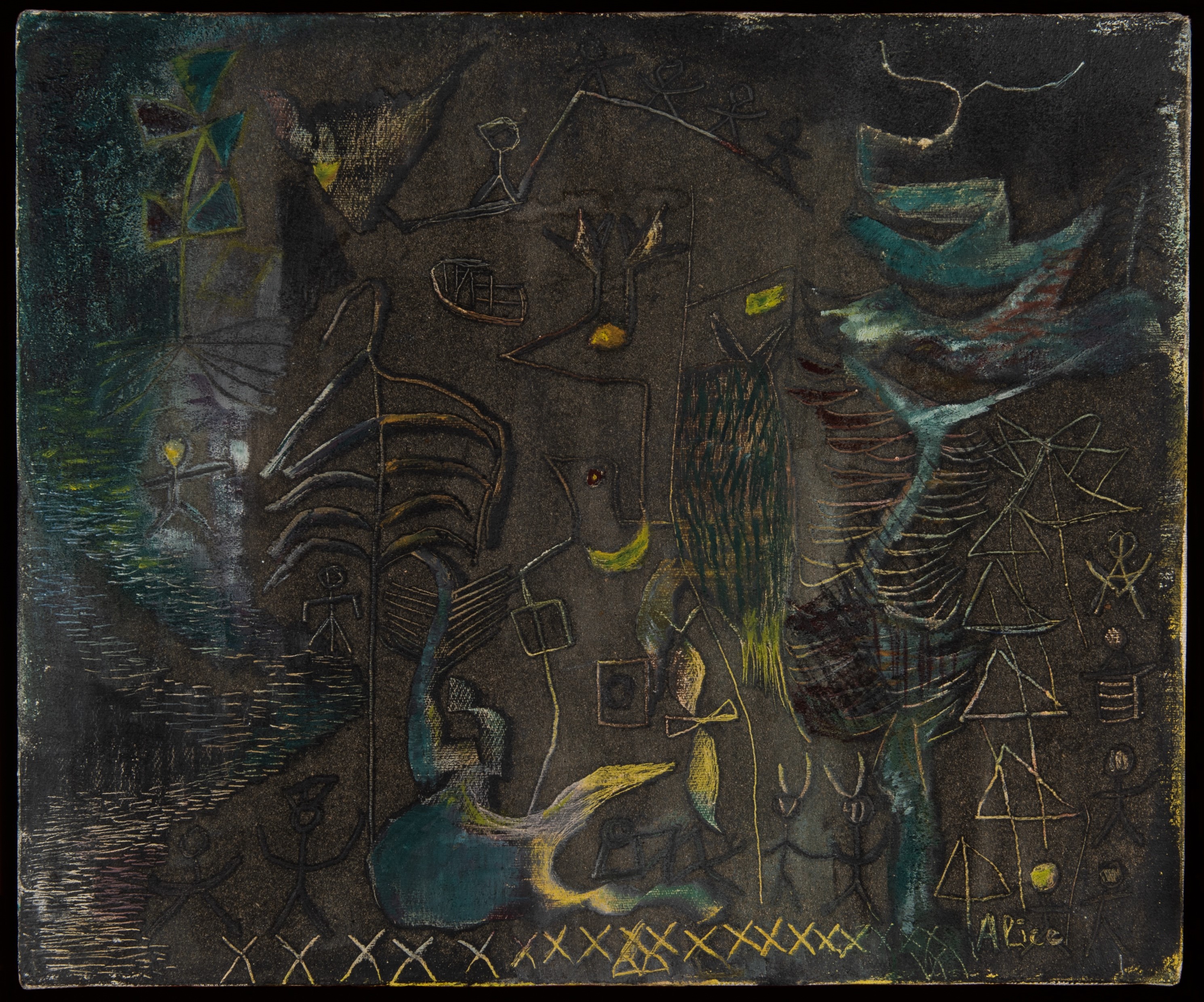The Sidney and Lois Eskenazi Museum of Art at Indiana University is pleased to announce the acquisition of Boîte à musique III (Music Box III) (1945) by the French/Mexican Surrealist artist Alice Rahon (1916–1987). The purchase of the painting was made possible thanks to the generosity of Paula Sunderman, a docent at the Eskenazi Museum of Art, along with Ann Sanderson, a former member of the museum’s National Advisory Board, and the estate of Herman B Wells via the Joseph Granville and Anna Bernice Wells Memorial Fund.
Alice Rahon was drawn into the circle of Surrealist artists and writers in Paris in the early 1930s, and initially expressed her creativity as a poet. With her husband, the Austrian artist Wolfgang Paalen, she traveled to Mexico in 1939. The couple decided to remain there following the outbreak of World War II, and Rahon became a Mexican citizen in 1946. In Mexico City, she was active in artistic, intellectual, and exile circles. With encouragement from fellow expatriate Surrealist artists Leonora Carrington and Remedios Varo, Rahon begin painting. She also became a close friend of the renowned Mexican modernist painters Frida Kahlo, Diego Rivera, and Rufino Tamayo. Like them, Rahon was inspired by the pre-Hispanic cultures of ancient Mexico. The imagery in Boîte á musique III evokes the hieroglyphs and carvings found on Mayan temples and pyramids. This is further emphasized through her technique of sgraffito, which involved incising lines into the painting’s surface of sand-infused oil paint to reveal contrasting layers of color below.
Rahon gained widespread recognition for her work during her lifetime. Considered one of the key figures in the development of Mexican modernism, her work—lauded for its almost magical quality—has attracted a new surge of interest in recent years.
According to Jenny McComas, Curator of European and American Art at the Eskenazi Museum of Art, “Rahon’s painting will help us tell a more nuanced and complex story of twentieth-century modernism to our visitors and students. First, it aligns with our commitment to revealing the important role played by women in the development of modernist art. Further, because Rahon was an émigré, this work offers insight into the impact that emigration and the consequent exposure to new cultures had on modernist artists in the World War II era. And finally, placing Rahon’s work in our galleries will enhance our visitors’ appreciation of Mexico as a center for modernist experimentation.”
“I am thrilled to add this important work by Alice Rahon to the museum’s collection. This acquisition not only complements our existing works by Surrealist artists—which include a complete set of Marcel Duchamp’s thirteen Readymades—but also reflects our commitment to collecting works by women artists. I am grateful to Paula Sunderman, Ann Sanderson, and Herman B Wells, for making this addition to our collection possible,” remarked David A. Brenneman, Wilma E. Kelley Director of the Eskenazi Museum of Art.



